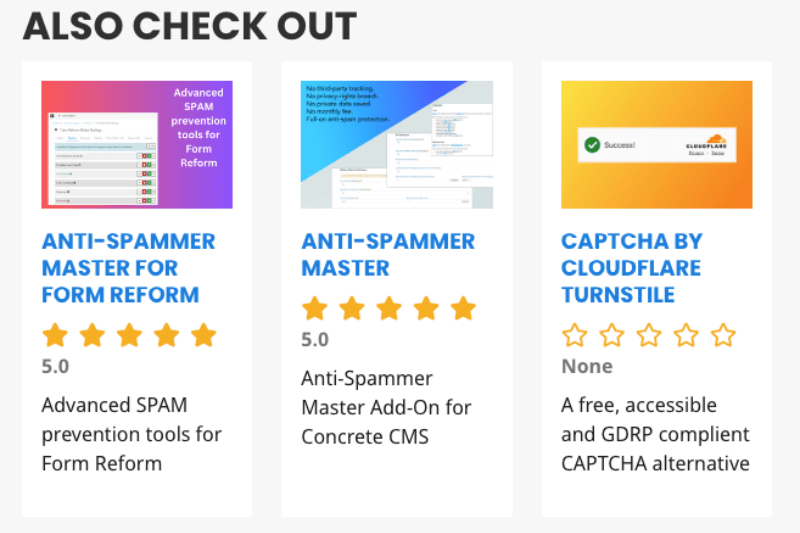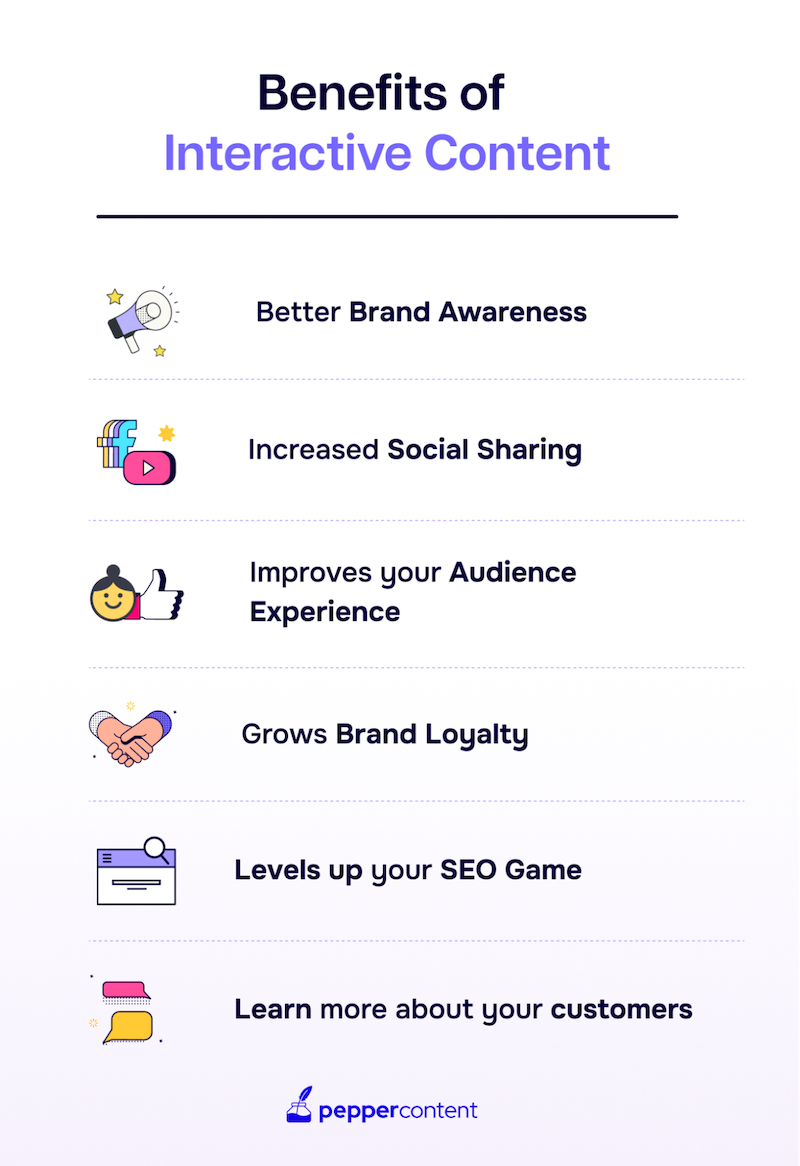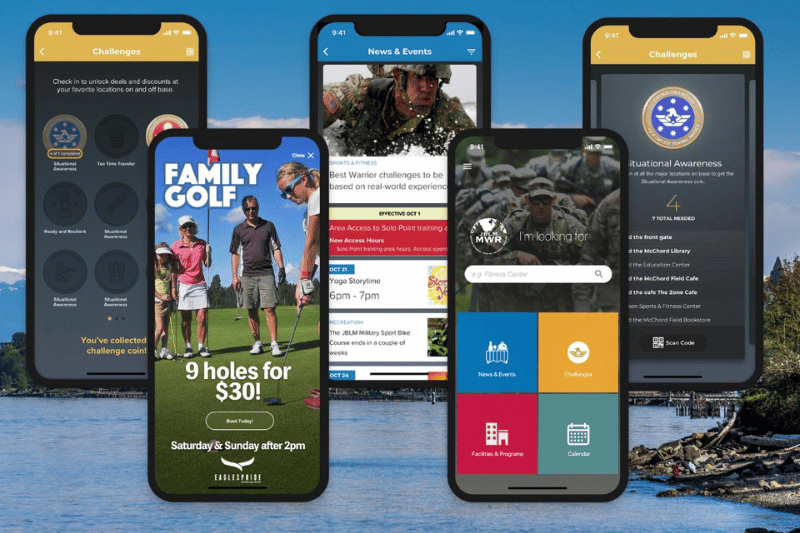Every business wants to see healthy amounts of traffic being driven to their website. If you look at the ecommerce sector, there are more than 26.2 million ecommerce websites - with over 13 million based in the US. That makes it a very competitive market, and you want to stand out from similar websites.
Every business wants to see healthy amounts of traffic being driven to their website. If you look at the ecommerce sector, there are more than 26.2 million ecommerce websites - with over 13 million based in the US. That makes it a very competitive market, and you want to stand out from similar websites.
Of course, you want to ensure that you’re offering quality products at reasonable prices and providing great customer service, two things that always contribute to customer loyalty and retention. But beyond that, you want to have high-quality content that engages and informs. One thing that can help drive traffic is different types of interactive content. Just what is interactive content, and what types should you consider?
What is Interactive Content?
As the name suggests, interactive content is content your customers interact with rather than passively engage with (for example, reading). Such content requires some active engagement from the customer and will usually respond or change when actions are taken.
Most of the content you produce (such as blog posts, videos, or infographics) is static and does not require the customer to take action. The various types of interactive content are dynamic in nature, and customers need to interact with them to move to the next step (think answering questions in an on-site quiz). Your choices may be based on how you deliver content, whether manually or through a CDN (content delivery network).
Why is Interactive Content Important?
Interactivity is one of the biggest website trends at the moment—and for good reason.
Interactive content offers something different to consumers, immersing them in more personalized content that actively involves participation. While part of the purpose is to entertain, it is more about enhancing the learning process and making them more engaged with your content and your brand.
From the perspective of your business, including interactive content is an efficient way of collecting data on what your customers like and identifying any patterns in their behavior.
For example, you could post a quiz about what features customers want to see in inbound call center solutions, then use those answers to inform your marketing strategies or even in the development or improvement of new products.
There are three main areas where interactive content can benefit your business.
- Preferences. Understanding how your customers engage with you and how they want to connect with you is paramount to success. Using the collected data to identify factors such as the type of content they prefer or whether they interact with you via a mobile app, your website, or your social media platforms can help guide you.
- Leads and conversions. While interactive content has many uses, such as improving brand awareness and educating customers, don’t underestimate its power in generating leads and converting customers. Interactive content engages customers, and when they’re highly engaged, they’re more likely to convert.
- Competitiveness. If you have a limited budget, it can sometimes seem impossible to compete with larger organizations. Interactive content can level the playing field and allow you to find creative ways to compete in your chosen market. This can be especially true of content that customers may revisit on several occasions.
8 Types of Interactive Content to Consider
Once you see that interactive content can benefit your business in various ways, the next thing to consider is what interactive content types will best suit your organization and provide measurable results.
Regardless of which content type you choose, make sure it doesn’t negatively impact the user experience. Hosting services like an unlimited bandwidth VPS guarantee load speeds aren’t affected by any new or large pieces of content.
1. Videos
You may already be using videos in your messaging and marketing efforts. You may even have incorporated UGC (user-generated content) videos that can both inform and engender trust with other customers. But you can also make some of your videos interactive video content. If you host webinars, interactivity is a great way to ensure that people have digested the information contained in the webinar video.
Other interactive elements you can include can help with lead generation. Just put a clickable component where you feel a customer will have learned enough to have genuine interest. You can also use clickable elements in explainer videos that showcase your products and how to use them. If a customer sees something they like, clicking on it will take them straight to that product’s landing page.
By embedding your interactive videos on your website and posting them on your social media platforms, you can drive more traffic and increase your chances of boosting your conversion rates. It can also help to regularly audit your website content to ensure redundant material is removed.
2. Interactive Quizzes And Polls
These are perhaps the best-known of the various types of interactive content, and nearly everyone will have participated in one. While many of them can be frivolous, they can be a great way of generating leads and collecting data on customer preferences and behavior.
A poll may ask questions around the subject ‘what is digital transformation?’ It could then go on to ask various questions about the various new and existing technologies that can contribute to successful digital transformation. At some point, you can direct participants to a lead or contact form on your website if they want further information.
Your quizzes can be light-hearted but can also collect essential data about the customers. In many cases, to see their quiz score, they have to enter their contact information at the end, complete with consent to receive marketing materials from you. Both these types of interactive content are interchangeable in purpose and can be used for data collection or lead generation.
3. Ebooks And White Papers
Due to being information-heavy, ebooks and white papers are often seen as dull pieces of content. However, by adding interactive elements, you can make them more exciting and make it easier for you to gain insights into how your customers engage with these types of content.
A great resource to explore is the downloadable HOA Welcome Letter from Neighborhood Online. This tool not only serves as a welcoming document but also offers insights into how new homeowners interact with their community information, demonstrating the potential of interactivity in traditionally static content. Integrating similar features into your white papers and ebooks can significantly enhance both user engagement and the value of the data you collect.
4. Infographics

Free to use image sourced from Pixabay
If you hear a piece of information, you’ll only remember around 10% of it after three days. However, pair that information with visual content, and recall rises to 65%. This is one reason why customers and B2C or B2B marketers alike show a strong preference for infographics.
Using visually appealing graphic backgrounds in your infographics can further enhance viewer engagement and information retention. Customers like them because they can impart relevant information without becoming boring.
Content marketers like them because they can serve multiple purposes, driving customers through your marketing funnel and, hopefully, to a purchase. You can use them to generate leads by creating interactive infographics that show how your product compares favorably to different competitors. Including a clickable link at the bottom of the infographic can start the customer journey.
You may even want to consider elevating your infographics to a more personalized experience. You could have customers answer several relevant questions and then have your automated system create an infographic corresponding to those answers that the participants can download from your website.
5. Interactive Calculators
At first, this may seem a strange choice for interactive content that drives user engagement and possible conversions. But when you have complex pricing structures, an interactive calculator can help a customer see what the realistic costs might be and make an informed decision about whether to seek more information from you or even prepare them to purchase.
For example, if you offer SaaS products, you might have different pricing tiers, with the final cost dependent on the number of users of that product. By inputting applicable variables, the customer can see the actual monthly cost and whether it is a cost-effective solution that will provide them with a good ROI (return on investment).
The advantage of including ROI calculators as part of your interactive arsenal is that they can be used at the beginning or towards the end of your marketing funnel. Prospective customers don’t want ambiguity; they want a realistic idea of what purchasing your product or service will cost them.
6. Interactive Product Recommendations
While many people will use the search function to find things, others will use any online virtual assistant or chatbot you have. You ask the customers some questions that indicate the type of product they’re looking for and any preferences they might have. Your virtual assistant or chatbot can then make several recommendations based on those answers.
One of the major benefits of this type of interactive content is that it provides excellent opportunities for upselling or cross-selling. The customer may have indicated the price range they are willing to spend, but your system can suggest slightly more expensive products with better features. Similarly, you can also include a ‘customers who bought this product also bought…’ feature.
You can also use this type of content to collect contact information and get people to subscribe to your email list. If they don’t want to make an immediate decision, or if their preferred product is out of stock, you can ask them if they want you to contact them with updates or when the product is back in stock.
For example, you can showcase related add-ons or complementary products from your marketplace, such as the "Anti-Spammer Master Add-On for Concrete CMS" or "CAPTCHA by Cloudflare Turnstile," as shown in the provided example. This not only adds value to the customer’s experience but also drives additional sales through related offerings.
7. Gamification
Who doesn’t love to play a game now and again? But did you know that including gamification in the sales process can lead to a 25.3% increase in conversion rates? By appealing to customers’ competitiveness, you can improve your market competitiveness. While based on a fun activity, it can be a great way of boosting website traffic, lead generation, and sales.
You may choose to include a lead generation form as a registration requirement for participating in the game. This can be a great way to encourage people to visit your website repeatedly, trust you more, and eventually move through your sales funnel. Repeat visits can also be encouraged by displaying the best performers.
A practical example of gamification in action is the JBLM 360 App. This app uses gamified challenges and rewards to encourage users to explore both the military base and local businesses. For instance, during a beta test, a challenge involving a visit to a local golf course saw hundreds of users participating, driving significant traffic to the business. This not only improved engagement with the app but also strengthened the connection between the base and the surrounding community.
Integrating such an approach into your sales and marketing strategy can foster a sense of community while also driving measurable business outcomes.
8. Contests
This can be a great type of content for spreading brand awareness and driving people to your website from social media. You can embed customizable interactive forms to encourage participation. After all, who doesn’t want the chance to win something at no cost to them?
One advantage of contests and competitions is that they can be very cost-effective. You decide what the prize is and what value it has, though, of course, the more attractive the prize, the higher the number of entrants. The prize could be anything from a free product to free shipping.
Contests can drive traffic to your site, be an efficient lead-generation tool, and collect contact details for your email marketing campaigns. If you ask entrants to provide some of their contact details, be sure to add that you are seeking permission to contact them with marketing materials.
Tracking Interactive Content Participation
You will likely be tracking multiple KPIs and metrics relating to your website. These can include everything from website visitor tracking to conversion rate optimization. Of course, you want more than someone simply visiting your website; you want them to engage with the various types of content and to progress through your sales and marketing funnels.
As with any other type of tactic, you will want to track the success of any interactive content you use. In particular, you may want to see how website traffic has increased as a result of any interactive content you have posted on social networks or other platforms. You also want to identify whether any interactive content has boosted lead generation and conversions.
The other thing to look at is comparisons between the different interactive content you have used. As with other types of content, some will work better than others. So, you want to be able to identify what works best and, when something performs poorly, what the causes were. It may be the type itself or it may be elements of that content that you can tweak through A/B testing and user feedback.
The Takeaway
Nearly everyone enjoys interactive experiences. Interactive content can be a powerful tool in your sales and marketing arsenal. A well-rounded content strategy should include various types of content that will engage with and inform your customers. Many types of interactive content also have a fun element that can boost customer satisfaction.
Engaging content on your social media will boost awareness and drive people to your site. Interactive posts can often provide instant feedback and data on user activity and response rates. Used properly, various types of interactive content can be an effective strategy for boosting various metrics, from website visitors to lead generation rates.


